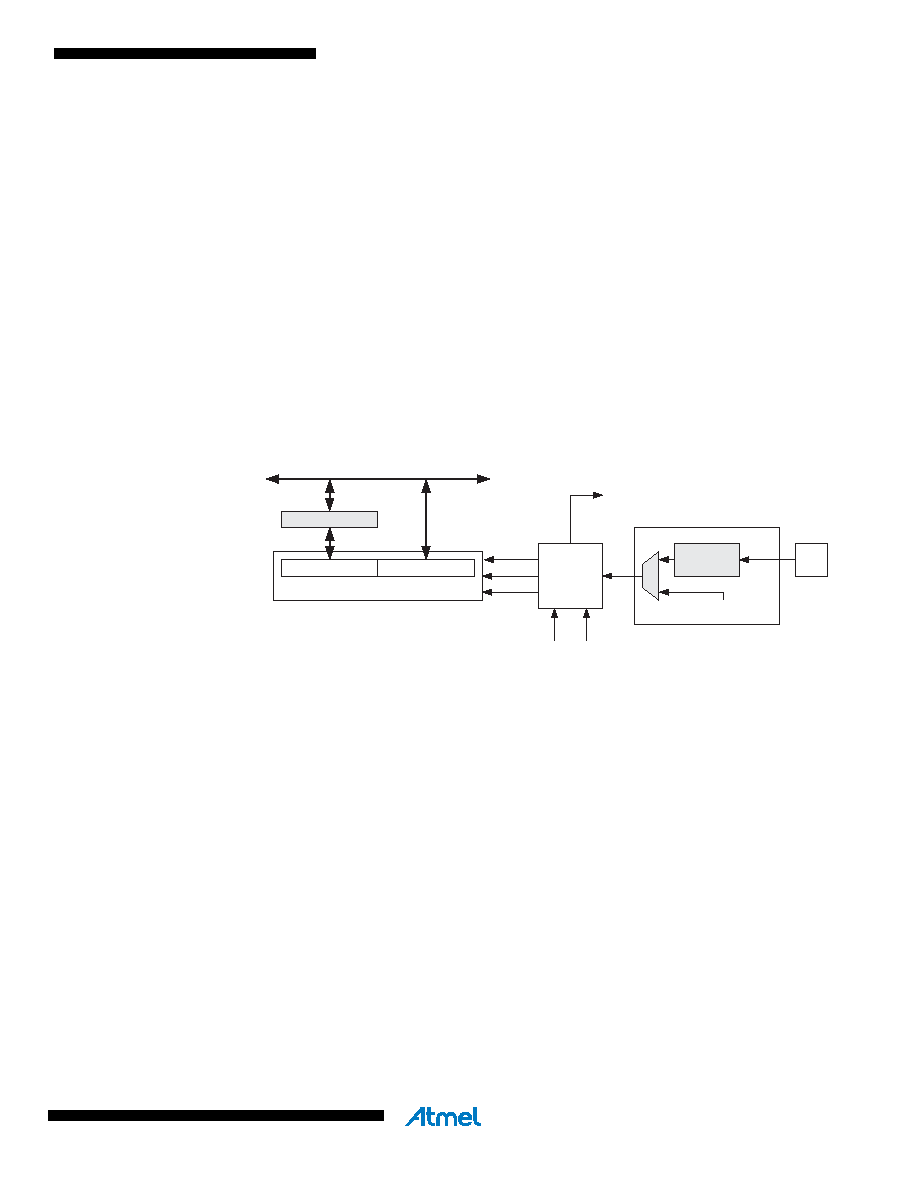- 您現(xiàn)在的位置:買賣IC網(wǎng) > PDF目錄25638 > MD80C52CXXX-12P883 (ATMEL CORP) 8-BIT, MROM, 12 MHz, MICROCONTROLLER, CDIP40 PDF資料下載
參數(shù)資料
| 型號: | MD80C52CXXX-12P883 |
| 廠商: | ATMEL CORP |
| 元件分類: | 微控制器/微處理器 |
| 英文描述: | 8-BIT, MROM, 12 MHz, MICROCONTROLLER, CDIP40 |
| 封裝: | 0.600 INCH, CERAMIC, DIP-40 |
| 文件頁數(shù): | 21/287頁 |
| 文件大小: | 12910K |
| 代理商: | MD80C52CXXX-12P883 |
第1頁第2頁第3頁第4頁第5頁第6頁第7頁第8頁第9頁第10頁第11頁第12頁第13頁第14頁第15頁第16頁第17頁第18頁第19頁第20頁當(dāng)前第21頁第22頁第23頁第24頁第25頁第26頁第27頁第28頁第29頁第30頁第31頁第32頁第33頁第34頁第35頁第36頁第37頁第38頁第39頁第40頁第41頁第42頁第43頁第44頁第45頁第46頁第47頁第48頁第49頁第50頁第51頁第52頁第53頁第54頁第55頁第56頁第57頁第58頁第59頁第60頁第61頁第62頁第63頁第64頁第65頁第66頁第67頁第68頁第69頁第70頁第71頁第72頁第73頁第74頁第75頁第76頁第77頁第78頁第79頁第80頁第81頁第82頁第83頁第84頁第85頁第86頁第87頁第88頁第89頁第90頁第91頁第92頁第93頁第94頁第95頁第96頁第97頁第98頁第99頁第100頁第101頁第102頁第103頁第104頁第105頁第106頁第107頁第108頁第109頁第110頁第111頁第112頁第113頁第114頁第115頁第116頁第117頁第118頁第119頁第120頁第121頁第122頁第123頁第124頁第125頁第126頁第127頁第128頁第129頁第130頁第131頁第132頁第133頁第134頁第135頁第136頁第137頁第138頁第139頁第140頁第141頁第142頁第143頁第144頁第145頁第146頁第147頁第148頁第149頁第150頁第151頁第152頁第153頁第154頁第155頁第156頁第157頁第158頁第159頁第160頁第161頁第162頁第163頁第164頁第165頁第166頁第167頁第168頁第169頁第170頁第171頁第172頁第173頁第174頁第175頁第176頁第177頁第178頁第179頁第180頁第181頁第182頁第183頁第184頁第185頁第186頁第187頁第188頁第189頁第190頁第191頁第192頁第193頁第194頁第195頁第196頁第197頁第198頁第199頁第200頁第201頁第202頁第203頁第204頁第205頁第206頁第207頁第208頁第209頁第210頁第211頁第212頁第213頁第214頁第215頁第216頁第217頁第218頁第219頁第220頁第221頁第222頁第223頁第224頁第225頁第226頁第227頁第228頁第229頁第230頁第231頁第232頁第233頁第234頁第235頁第236頁第237頁第238頁第239頁第240頁第241頁第242頁第243頁第244頁第245頁第246頁第247頁第248頁第249頁第250頁第251頁第252頁第253頁第254頁第255頁第256頁第257頁第258頁第259頁第260頁第261頁第262頁第263頁第264頁第265頁第266頁第267頁第268頁第269頁第270頁第271頁第272頁第273頁第274頁第275頁第276頁第277頁第278頁第279頁第280頁第281頁第282頁第283頁第284頁第285頁第286頁第287頁

117
8272E–AVR–04/2013
ATmega164A/PA/324A/PA/644A/PA/1284/P
16.5
Prescaler Reset
The prescaler is free running, that is, operates independently of the clock select logic of the
Timer/Counter, and it is shared by Timer/Counter1 and Timer/Counter0. Since the prescaler is
not affected by the Timer/Counter’s clock select, the state of the prescaler will have implications
for situations where a prescaled clock is used. One example of prescaling artifacts occurs when
the timer is enabled and clocked by the prescaler (6 > CSn2:0 > 1). The number of system clock
cycles from when the timer is enabled to the first count occurs can be from 1 to N+1 system
clock cycles, where N equals the prescaler divisor (8, 64, 256, or 1024). It is possible to use the
Prescaler Reset for synchronizing the Timer/Counter to program execution. However, care must
be taken if the other Timer/Counter that shares the same prescaler also uses prescaling. A pres-
caler reset will affect the prescaler period for all Timer/Counters it is connected to.
16.6
Counter Unit
The main part of the 16-bit Timer/Counter is the programmable 16-bit bi-directional counter unit.
Figure 16-2 shows a block diagram of the counter and its surroundings.
Figure 16-2. Counter unit block diagram.
Signal description (internal signals):
Count
Increment or decrement TCNTn by 1.
Direction
Select between increment and decrement.
Clear
Clear TCNTn (set all bits to zero).
clk
Tn
Timer/Counter clock.
TOP
Signalize that TCNTn has reached maximum value.
BOTTOM
Signalize that TCNTn has reached minimum value (zero).
The 16-bit counter is mapped into two 8-bit I/O memory locations: Counter High (TCNTnH) con-
taining the upper eight bits of the counter, and Counter Low (TCNTnL) containing the lower eight
bits. The TCNTnH Register can only be indirectly accessed by the CPU. When the CPU does an
access to the TCNTnH I/O location, the CPU accesses the high byte temporary register (TEMP).
The temporary register is updated with the TCNTnH value when the TCNTnL is read, and
TCNTnH is updated with the temporary register value when TCNTnL is written. This allows the
CPU to read or write the entire 16-bit counter value within one clock cycle via the 8-bit data bus.
It is important to notice that there are special cases of writing to the TCNTn Register when the
counter is counting that will give unpredictable results. The special cases are described in the
sections where they are of importance.
TEMP (8-bit)
DATA BUS (8-bit)
TCNTn (16-bit Counter)
TCNTnH (8-bit)
TCNTnL (8-bit)
Control Logic
Count
Clear
Direction
TOVn
(Int.Req.)
Clock Select
TOP
BOTTOM
Tn
Edge
Detector
( From Prescaler )
clk
Tn
相關(guān)PDF資料 |
PDF描述 |
|---|---|
| MQ80C32E-12:D | 8-BIT, 12 MHz, MICROCONTROLLER, CQFP44 |
| MQ80C52CXXX-16SBR | 8-BIT, MROM, 16 MHz, MICROCONTROLLER, CQFP44 |
| MT80C31-20D | 8-BIT, 20 MHz, MICROCONTROLLER, PQFP44 |
| MD80C32E-16SC | 8-BIT, 16 MHz, MICROCONTROLLER, CDIP40 |
| MQ80C52TXXX-16SB | 8-BIT, MROM, 16 MHz, MICROCONTROLLER, CQFP44 |
相關(guān)代理商/技術(shù)參數(shù) |
參數(shù)描述 |
|---|---|
| MD80C86 | 制造商:INTERSIL 制造商全稱:Intersil Corporation 功能描述:CMOS 16-Bit Microprocessor |
| MD80C862 | 制造商:Intel 功能描述:PROCESSOR:MICRO-PROCESSOR |
| MD80C86-2 | 制造商:INTERSIL 制造商全稱:Intersil Corporation 功能描述:CMOS 16-Bit Microprocessor |
| MD80C86-2/883 | 制造商:Intersil Corporation 功能描述:MPU 16BIT CMOS 8MHZ 40CDIP - Rail/Tube 制造商:Rochester Electronics LLC 功能描述:CPU 16BILT 5V CMOS 8MHZ 40CDIP - Bulk |
| MD80C86-2/B | 制造商:Intersil Corporation 功能描述:MPU 16BIT CMOS 8MHZ 40CDIP - Rail/Tube |
發(fā)布緊急采購,3分鐘左右您將得到回復(fù)。